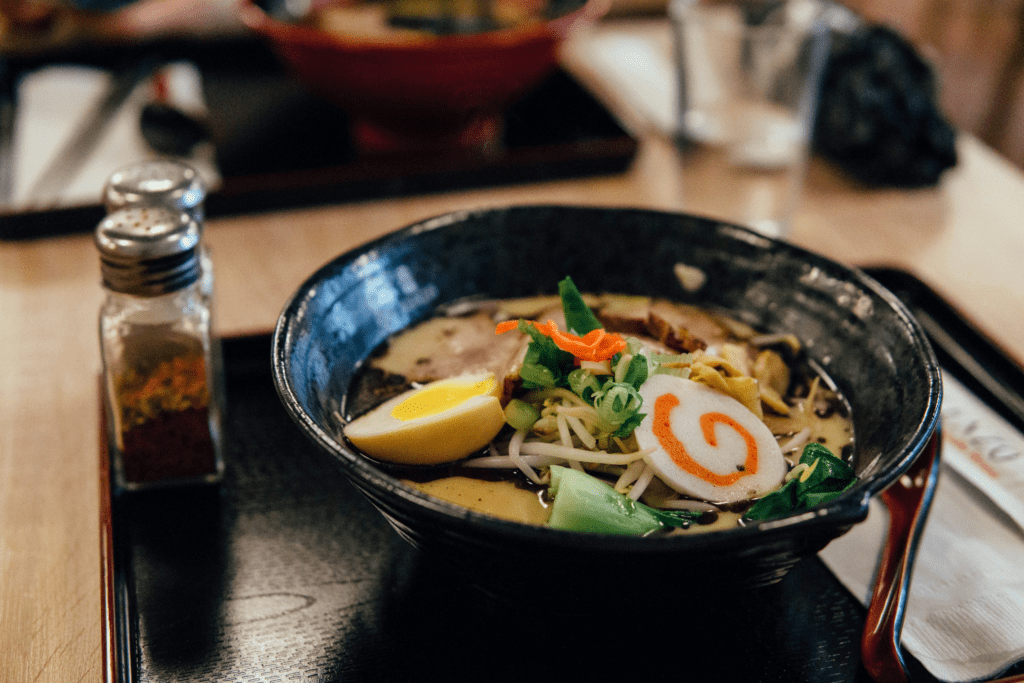Ramen is one of Japan’s most loved dishes, attracting both locals and tourists. Some famous ramen restaurants have long lines, with customers waiting for hours to get a seat. To solve this problem, many ramen shops in Japan have started using an entry pass system. Instead of standing in line for a long time, customers can now buy a pass to secure a seat at a specific time.
This system helps control crowding, reduces waiting times, and ensures a smoother experience for both customers and restaurant staff. While some people welcome this change, others feel that paying extra to enter a restaurant is unnecessary. Despite the mixed opinions, the trend is spreading across Japan, with more restaurants adopting the system.

Why Are Ramen Restaurants Introducing Entry Passes?
Some ramen restaurants in Japan are extremely popular. One such place is Ginza Hachigou, a well-known ramen shop in Tokyo’s Ginza district. The restaurant, which opened in 2018, is featured in the Michelin Guide and serves a famous dish called “Regular Chuka Soba.” Many visitors, including international tourists, line up daily to taste this special ramen.
In the past, customers had to wait in line for hours, sometimes even up to six hours, just to enter. The restaurant tried different ways to manage the crowds, such as giving out numbered tickets and using a sign-in board. However, long queues remained a big issue.
To solve this, in November 2023, Ginza Hachigou introduced an entry pass system. Customers who visit between 11 a.m. and noon can still enter on a first-come, first-served basis. However, those who want to dine after noon must buy a pass for 500 yen ($3.20). The pass allows them to enter at a specific 30-minute time slot, making the experience more organized and predictable.
Customer Reactions to the Entry Pass System
Reactions to this new system have been mixed. Some people appreciate the convenience, while others feel unsure about paying an extra fee just to enter a restaurant.
One customer, a 32-year-old civil servant from Hokkaido, said, “The taste here is unique. It’s difficult to wait in line without knowing when you’ll get in. Paying 500 yen to secure a seat is worth it.”
Restaurant manager Yasushi Matsumura explained, “I wanted to eliminate the queues without raising the price of ramen.” He added that the system also helps in other ways, such as making food preparation smoother and keeping track of repeat customers.
How Does the Entry Pass System Work?
The entry pass system is managed by a Tokyo-based company called TableCheck Inc. Customers can buy their passes using a smartphone app or through the restaurant’s website. The system supports 18 languages, allowing both local and international customers to use it easily.
When purchasing a pass, customers can select the number of people, the date, and the time they wish to dine. Payments are made via credit card, making the process quick and convenient.
Since its introduction, the system has expanded beyond ramen shops. Other types of restaurants, such as shaved ice shops and curry houses, have also started using it. As of now, about 80 restaurants in Japan have adopted the entry pass system, and around 200,000 people have used it.
Benefits of the Entry Pass System
- Shorter Waiting Times
Customers no longer have to stand in line for hours. Instead, they can buy a pass, arrive at the scheduled time, and enjoy their meal without unnecessary delays. - Better Experience for Diners
Long lines can be frustrating, especially in bad weather. The entry pass system ensures that customers can plan their visits in advance and avoid discomfort. - Improved Restaurant Operations
Managing large crowds can be challenging for restaurants. With the pass system, restaurants can control the number of people inside at a given time, making it easier to serve customers efficiently. - Flexible Options for Restaurants
Restaurants can set the price of the entry pass according to their needs. Some places may charge lower fees, while others might set higher prices during peak hours or weekends. - Supports Tourism Growth
As Japan continues to attract international visitors, the system makes it easier for tourists to experience popular restaurants without spending hours in line.
Concerns and Criticisms
While many customers find the system helpful, not everyone agrees with it. Some people believe that paying extra for entry is unfair, especially when they are already paying for food. Some restaurants have also hesitated to introduce the system because they do not want to charge customers additional fees beyond the price of their meals.
A representative from TableCheck Inc. responded to this concern, saying, “With the increase in international tourists, interest in Japanese cuisine is growing. We hope people will pay attention to the value of each seat, not just the price of the dishes.”